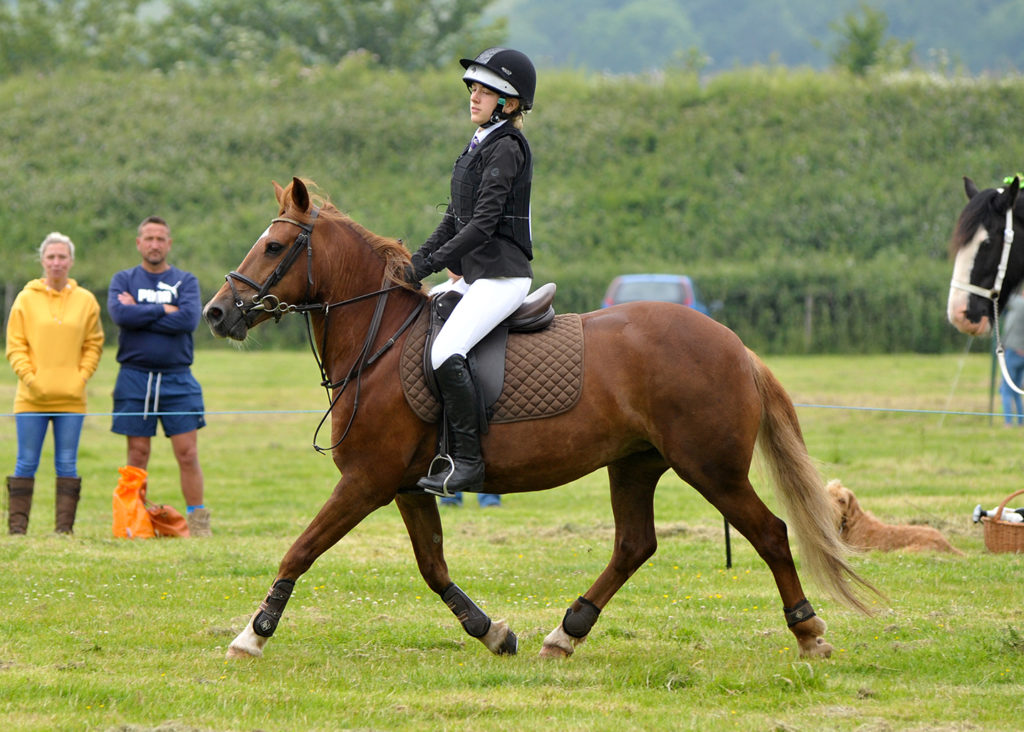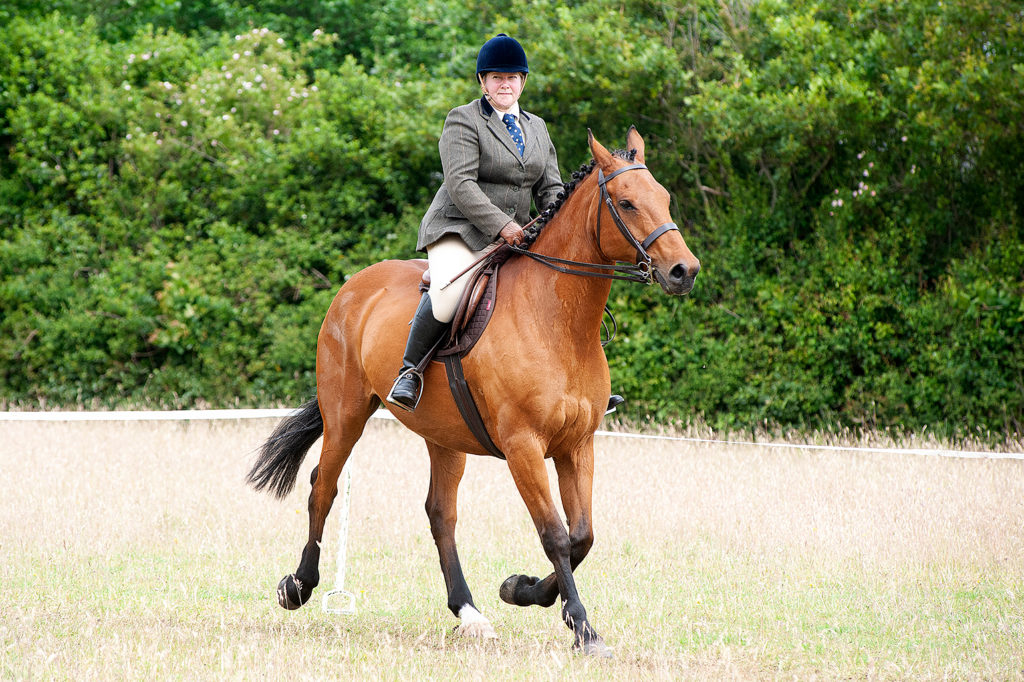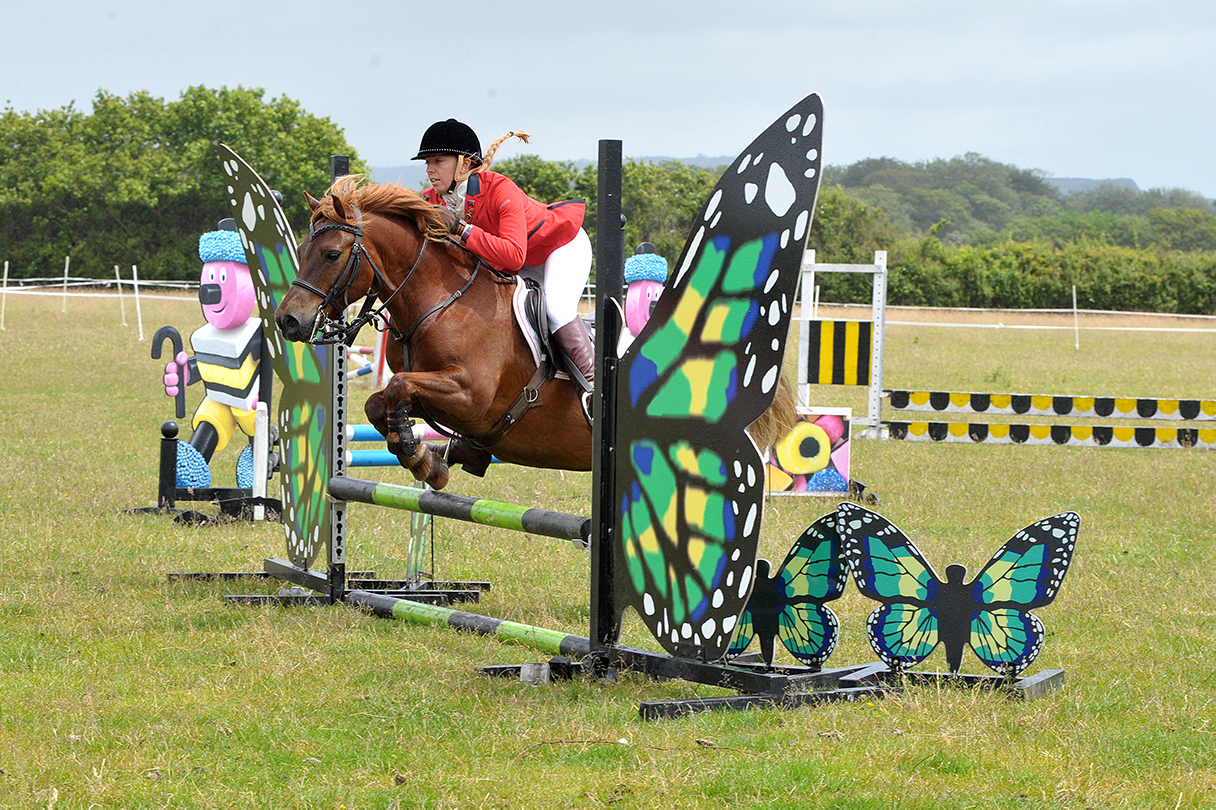How to photograph horses jumping. All photographs © Al Macphee/MiraclePR
General tips on how to photograph horses jumping
It’s mainly about timing so that you catch the perfect shot of the hoofs up over the fence. If you get the horse just as it takes off with the fence looking nice and high then you’re well on your way.
Now, you could shoot at 20 frames per second and nine times out of ten you will get that shot but you are going to have to edit that series first. If you’re working at an event wher you’re displaying the images on site then you’ve got to get one perfect jumping image down to that display unit as sharpish as you can. If you set your motor drive going at 20 frames per second, you’ve then got to go through those files – in camera – to get that knocked down to just that one perfect shot. So that’s why I say it’s all about timing.
Lighting is really important too. You mustn’t shoot into the sun because the riders like to see how well they’ve brushed the horse and how smart they look and how smart their horse looks. A nice bit of sunlight on the horse’s coat works wonders. It glosses the coat up and makes it shine and look healthy.
A silhouette of a rider going over a jump won’t work. It could be any rider going over the jump. If you’re trying to sell those pictures to riders, they need to see their own faces. They need to see that it’s their horse. Taking an arty shot of a black silhouetted horse and rider going over a jump might nake a nice picture but how are the riders going to find them? How are you going to ID them later on when it comes to filing the images and trying to sell them?
Sunlight on the horse’s coat works wonders. It makes it shine and look healthy.
Eventing
With eventing you’ve got your dressage, show jumping and cross country.
Now, although this is an article on how to photograph horses jumping, it’s useful to know some tips about photographing dressage. In a good dressage shot, the rider will be upright and the horse will be demonstrating what they call in the trade, ‘the perfect M’. If you get that M with a nice straight rider and the horse with its ears forward, you’ve made that sale – unless they’ve already got that shot from the week before. The M also works in show jumping.
In a good dressage shot, the rider will be upright and the horse will be demonstrating what they call in the trade, ‘the perfect M’.

As I said in How To Take Photographs in the Rain, you have to try and typify the event. There’s no point getting the pose where the horse is stood to attention in front of the judge and the rider is tipping their hat. That’s a lovely shot but if they’ve bought it at a previous event with the same outfit and the same horse and the same bridle, you’re limiting your chance of a sale. So, if you can get a different background that typifies the area, you will be well away.
With show jumping, you generally have one photographer in the arena so as not to distract the horses and riders. When you do need to move to a new viewpoint, you must be unobtrusive. When doing your rehearsals, work out how to minimise the amount you will need to move and change settings. The more you have to do, the more complicated it gets and the more time it takes. If you can twist your body to take shots of two different fences, you can lock your settings but this will depend on your angles, background and lighting, etc.
I tend to take three or four shots. As the horse lift their feet off the ground and take off, that’s your first shot. Then one shot going over. Sometimes, if it’s a wide jump, they like that horizontal shot with both ends of the animal tucked up. That’s your third shot. And then possibly the land with the feet outstretched.
Work out how to minimise the amount you will need to move and change settings. The more you have to do, the more complicated it gets and the more time it takes.
Photographing show jumping requires high levels of concentration. If you have 200 riders on a course that lasts three and a half minutes, not only do you have to have your eyes open for the next horse but you’re also shooting three or four fences. You need to be able to put yourself in a position to get the best angle.
It would be easy to sit in one place and do one fence. You would have plenty of time to edit and get rid of ten shots there. But if you’re trying to sell pictures, the more choice of fences the better. If you’re doing four fences to maximise sales and you’re taking 20 shots per fence, you’ve got 60 to 70 shots to get rid of. You’ve got to do that ‘delete, confirm, delete, confirm’ process which is going to take about 30 to 40 seconds. Before you’ve finished that, the next horse is in the ring. So you get behind on your edits. You’ve then got to remember the horse you’ve just done so you can scroll back and continue deleting. Then you’ve got another 75 shots of your next horse. So be picky with your shutter.
How to photograph horses jumping: Camera settings
Your shutter speed will depend on whether the horses are coming towards you or crossing the film plane. Generally you will need to set it to at least 1/500.
When setting your focus, you will need to consider the angles between you and the fences. If you’ve got your focusing too sensitive and you’re at the wrong angle to the fence, your camera will focus on the part of the fence that’s in the foreground. So centre spot focusing doesn’t work unless you’re at an angle to the fence (which I usually recommend because fences always look good at an angle). You won’t have much time to change your focusing point during the event so choose your position wisely. If you’re rushing, you’re going to accidentally bin the wrong image and get into a right mess. So make life as simple as you can. Take two to three shots at one fence and then move to the second fence.
Taking fewer images also makes it easier to sell your pictures. When the riders are at the display van, they’re only having to go through a few images – not 20 or 30. Even with a queue of three people, if you’ve got one rider going, “I don’t want that one, maybe that one, I don’t want that one, I like that one, etc.” for every fence, the rider at the back of the queue is going to get bored and walk off. So your sale has gone. So the fewer shots you’ve got, the better. It is easier to sell one shot out of three than one out of 20. Quality over quantity. Make it easier for them. If they’ve only got one shot to choose from their decision is made for them,
If you confuse your buyer they will say, “Oh, I’ll come back and look later after I’ve sorted my horse out.”
File size, memory cards and labeling
Think about the size of your image files because this will directly affect the number of cards you will need and the transfer speed of your files. To make the sums easier, say a three meg file takes a second to transfer then a 16 meg file will take five or six seconds.

Bear in mind that on a big three day event, there will be other photographers passing their cards in to the person behind the desk whose job is essentially to get those images on the screen as quickly as possible for people to buy. So, if you’ve got 100 16 meg files on your card, she or he is going to be going nuts waiting on your card to transfer across because she can’t process anyone else’s while waiting for yours.
Of course, if you are working for an organiser who wants to shoot at ten meg, then you shoot at ten meg but ideally, a three meg file will transfer across more quickly, you’ll get your pictures on display more quickly and you’ll get the sales more quickly. Besides, what’s the point in having a 32 gig card with ten shots on it? You may as well have a four gig card with ten shots in it.
A three meg file will transfer across more quickly, you’ll get your pictures on display more quickly and you’ll get the sales more quickly.
Take care when labeling your cards. Going back to the old days, you would get your wages in pay packets with your name written on it. Event photographers used to put their cards in pay envelopes. In the little space where you put your name, they would put their initials so that the person behind the counter knew whose images they were. Otherwise, their images could be credited to someone else. If someone else gets the credit for your images, they get paid and you don’t!
So I would put ‘AM, Horses 2-10’. Then, if someone comes up to the display van and asks to see ‘horse number eight’ that person transferring the files and putting them on display can say, ‘If you hang about for a few seconds, I will put it up for you.’ She can then go through the 20 odd envelopes waiting to be filed and easily find it. It saves her sending the potential customer away.
So, as you can see, being a professional equestrian photographer is about a lot more than how to photograph horses jumping.
For more tips on how to photograph horses jumping and other advice for sports and event photography, please enter your details on the right hand side of the page. I won’t send more than one email a week.
Have a burning photography question you would like Al to write about in his next blog post? Email info@miraclepr.com with your request.

